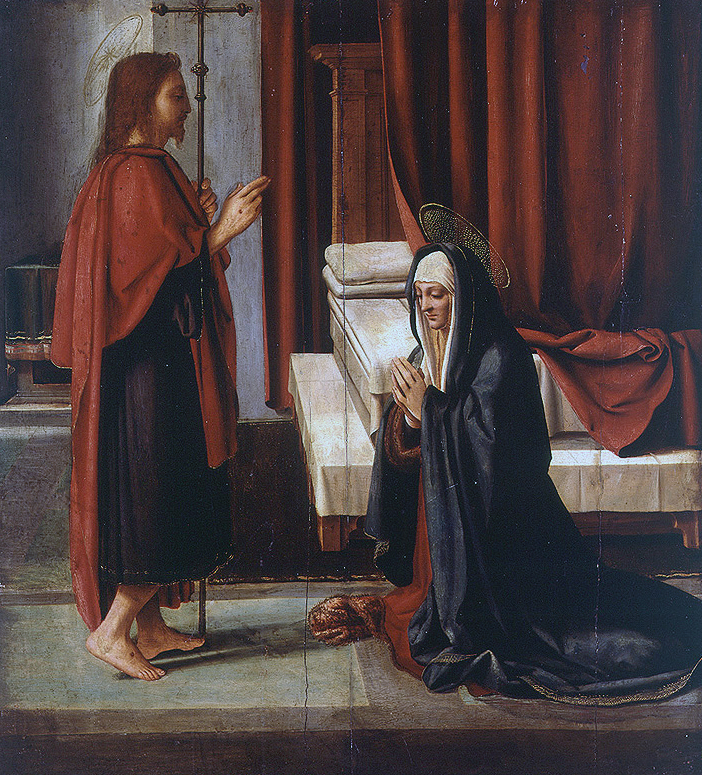In previous entries of Christian art we have seen how literary fiction was growing within the New Testament itself; how, from St. Paul who did not mention the empty tomb in his epistles (the oldest texts of the New Testament), the evangelist Mark did mention it but only with a ‘young man’. Matthew, who wrote after Mark, used the latter’s story and, in his own literary fiction, transfigured the young man into an ‘angel’. Luke and John, who knew Matthew’s text, added another angel to their gospels.
This is how the four gospels were created, each late gospel making the miracle bigger. But the story of how fiction grew does not end in the New Testament. Just as the so-called apocryphal gospels devised additional stories that do not appear in the so-called canonical gospels (e.g., passages from the childhood of Jesus), the popular imagery would invent stories that do not even appear in the apocrypha.
For example, the gospels do not tell that the risen Jesus appeared to his mother. But artists and Christian piety could not help imagining the encounter. This can be seen in Appearance of the Risen Christ to the Virgin (1515, above), a work by Hernando Yáñez de la Adelina, a Spanish Renaissance painter and introducer of the Italian quattrocentist formulas in Valencia and Castile.
